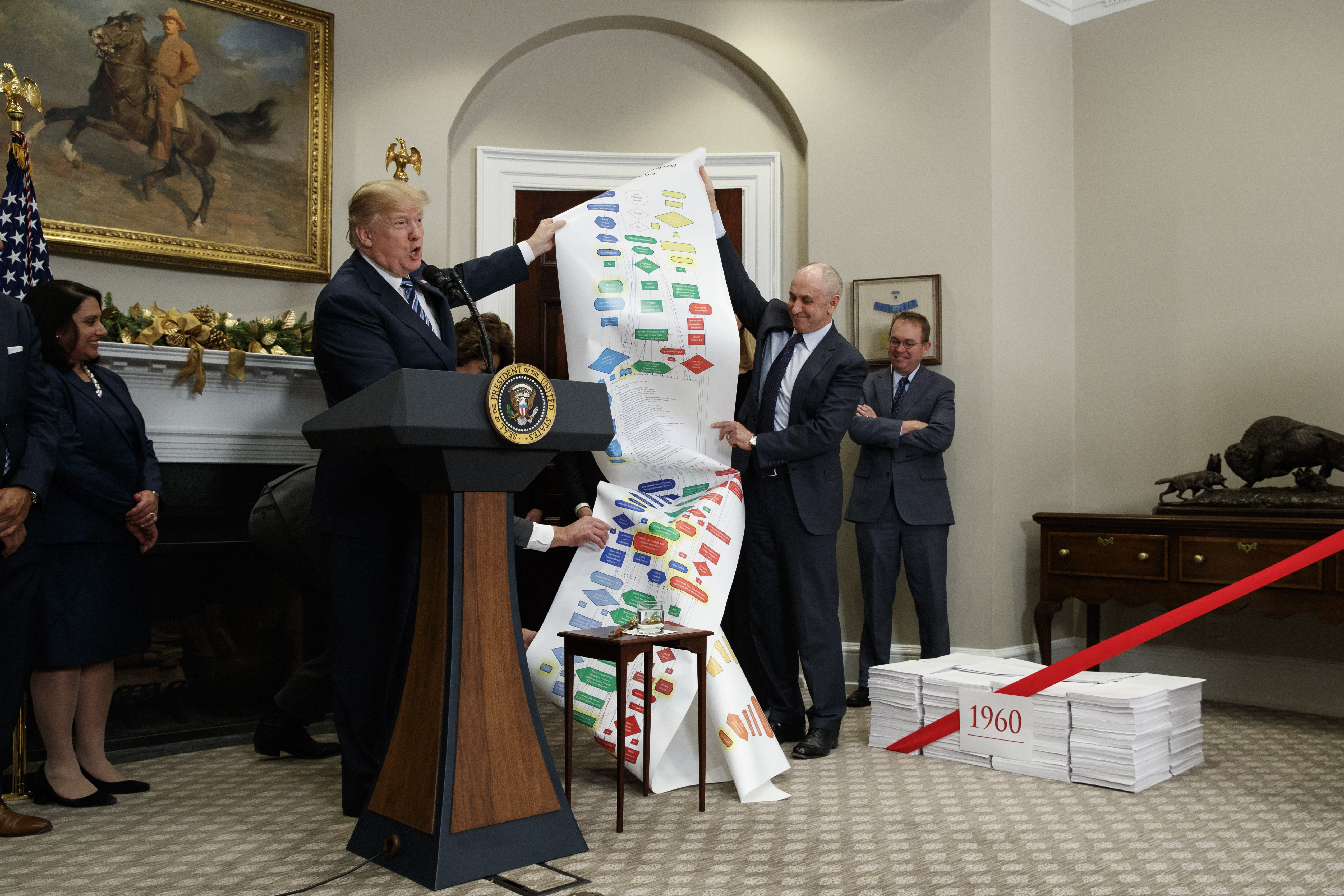Two things keep happening and probably will continue in 2018: News outlets will continue producing in-depth Trumpland stories; critics will keep slamming them for it.
Some of that criticism is warranted, given that the media have decided that a small (and shrinking) slice of the electorate is more important than all others and have given it outsized attention and sympathetic coverage in a way they haven’t for any other group in recent memory. Some of the criticism is outdated, though, as more of those stories and analysis pieces are finally getting beyond the cliched ‘downtrodden Trump voter in a diner’ who will support him no matter what.
But one of the most important stories in that unfolding drama likely won’t even be included in the debate—even though it should be—because it focuses primarily on wealthy, influential white men who believe and act on things that aren’t backed by evidence, not on poor or working class white Americans who believe and act on things that aren’t backed by evidence. It’s the latest example of the media’s struggle to connect-the-dots in a seemingly upside-down world.
The News York Times recently published a piece headlined, “The Trump Effect: Business, Anticipating Less Regulations, Loosens Purse Strings.”
It begins: “A wave of optimism has swept over American business leaders, and it is beginning to translate into the sort of investment in new plants, equipment and factory upgrades that bolsters economic growth, spurs job creation – and may finally raise wages significantly.”
The newfound confidence of businesses is predicated on the belief that the Trump administration won’t be adding new regulations. The story centers on Trump supporters who have found a way to ignore or downplay his bigotry while assigning super-human powers to him. The story doesn’t get the Trumpland label because these supporters are more likely to wear wing-tipped shoes rather than overalls to work. But it is a Trumpland story, nonetheless, because it actually has more resonance than the other more-discussed Trump supporter stories. Too many of those have mainly amounted to social curiosities and provided a chance for well-off and educated Americans to either gawk at the less fortunate as though walking through a zoo or feign concern for people they don’t want living next door.
Exceptions include “A Protest in Trump Country brings home nation’s race divides,” part of The Associated Press’s Trump Country series, and “Does the white working class really vote against its own interests?” by Politico; each grapples with the complexity of race and class, though in different ways. Still, too many such stories seem to be written by people who don’t realize there are non-Trump voters in Trump County who have valuable insights to share.
The “Trump Effect” article is based on the notion that really rich men are convinced that regulations are bad, and therefore fewer of them must be a good thing—even though that belief is based on nothing more than wishful thinking. The article even points that out that “there is little historical evidence tying regulation levels to growth” and that “businesses acknowledge that the most important reason for their increased optimism is the simple fact that the domestic economy continues to expand, with few clouds on the horizon.”
If that’s true, why frame a story strongly suggesting that the Trump way will be better for the economy and workers? For example, the story says wages may finally increase because of the new regulatory outlook – but fails to mention that the poor and middle class just received the largest annual increase in wages in 2016 before this new regulatory outlook.
The economy had a couple of solid quarters of plus 3 percent growth in 2017? That happened at least seven times under the previous administration, including back-to-back quarters of 4.6 percent and 5.2 percent growth in 2014 before this new regulatory outlook.
The longest-ever monthly job creation streak happened before this new regulatory outlook, as did a nearly tripling of the S&P 500 and more than doubling of the Dow Jones Industrials. During that period, under a supposedly stifling regulatory environment, corporations were recording record profit, the national deficit was falling and the average number of jobs created every month was higher than what was recorded during the optimism of 2017.
The Wall Street Journal recently reported something for which there is a lot of historical evidence: that wages have begun to go up in some areas of the country because the unemployment rate is really low and competition for workers has increased. And guess what? The rapidly falling jobless rate also began well before the change in the regulatory environment.
What evidence is there that this would not have happened under a Clinton presidency? Or a Rubio presidency?
The story suggests, without evidence, that a new regulatory environment could lead to greater growth and higher wages that otherwise would not have materialized, while short-changing the effect on downscale Trump voters. There was no mention of what defanging Obama-era regulations, put in place after the financial crash, could do to the millions of everyday Americans who have been helped by the Consumer Financial Protection Bureau. Nowhere was there grappling with decisions by the Trump administration that might make it harder to protect coal miners from black lung. The new tax law, which gets a mention in the story as another reason for optimism, might have paved the way for less health insurance coverage for millions and a cut in entitlements. How does that affect downscale Trump voters and other vulnerable Americans?
If the media really wants to better understand the fates of those who feel left behind and ignored, they can’t afford to pen stories that speak of optimism at the top of the economic ladder without mentioning what it means for those on the bottom rungs.



